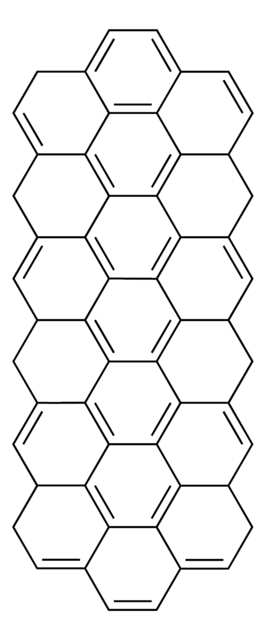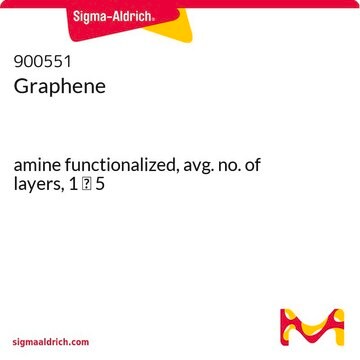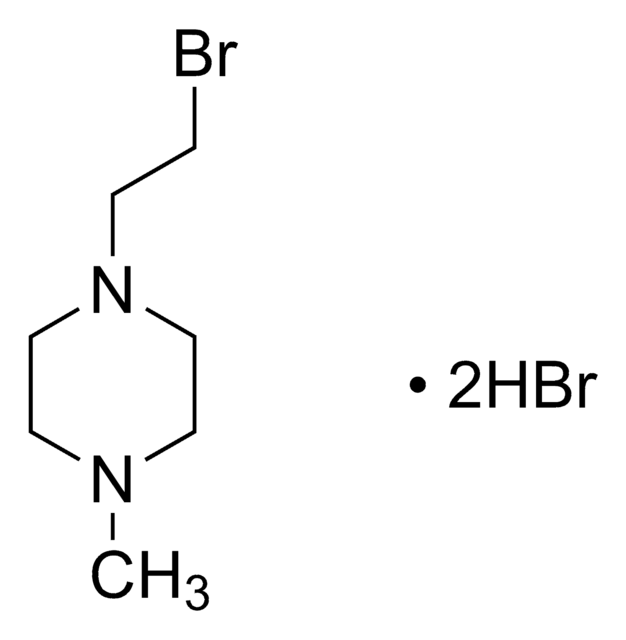797766
Graphene nanoribbons
alkyl functionalized
Synonym(s):
GNRs, nano-graphene ribbons
About This Item
Recommended Products
assay
≥85% carbon basis (TGA)
form
powder
greener alternative product characteristics
Design for Energy Efficiency
Learn more about the Principles of Green Chemistry.
sustainability
Greener Alternative Product
L × W
2-15 μm × 40-250 nm
surface area
38 m2/g
density
1.5763 g/mL (He gas method)
bulk density
0.0953 g/mL (Mercury Porosimetry)
greener alternative category
Looking for similar products? Visit Product Comparison Guide
General description
Application
- Composites.
- Conductive inks.
- Electrodes for LiB.
- Energy storage & harvesting applications.
- Bio-medical applications.
Preparation Note
- Less preferred dispersing organic solvents: cyclohexanone and γ-butyrolactone.
- Aqueous dispersions are possible at 0.1 mg/mL with triton-X-100, sodium cholate and deoxycholate and cellulose-based surfactants.
Analysis Note
ID/IG = 1.84±0.25
I2D/IG = 2.12±0.32
2D FWHM = 41 cm-1
Legal Information
Storage Class
11 - Combustible Solids
wgk_germany
nwg
flash_point_f
Not applicable
flash_point_c
Not applicable
Certificates of Analysis (COA)
Search for Certificates of Analysis (COA) by entering the products Lot/Batch Number. Lot and Batch Numbers can be found on a product’s label following the words ‘Lot’ or ‘Batch’.
Already Own This Product?
Find documentation for the products that you have recently purchased in the Document Library.
Articles
Graphene is a unique two-dimensional (2D) structure of monolayer carbon atoms packed into a dense honeycomb crystal that has attracted great interest due to its diverse and fascinating properties.
Since its discovery little more than a decade ago,1 the two-dimensional (2D) allotrope of carbon—graphene—has been the subject of intense multidisciplinary research efforts.
Graphene's unique properties spark interdisciplinary interest; its honeycomb structure offers electrical, optical, and mechanical marvels.
Graphene nanoribbons (GNRs) are quasi-one-dimensional narrow strips of graphene comprised of sp2-hybridized carbon atoms arranged into hexagonal honeycomb lattice configurations.
Our team of scientists has experience in all areas of research including Life Science, Material Science, Chemical Synthesis, Chromatography, Analytical and many others.
Contact Technical Service







